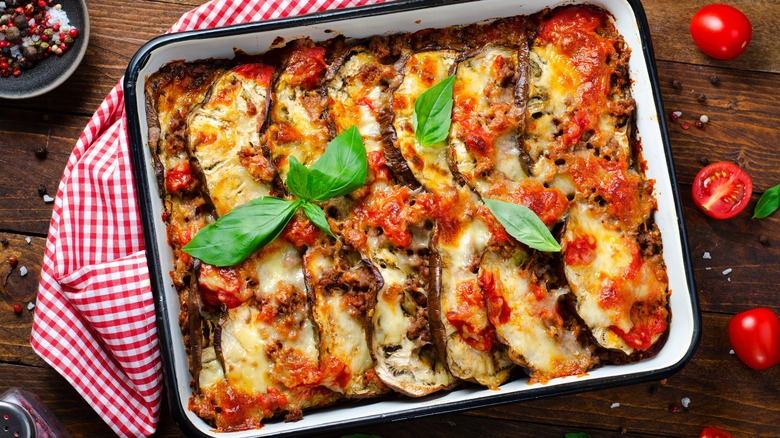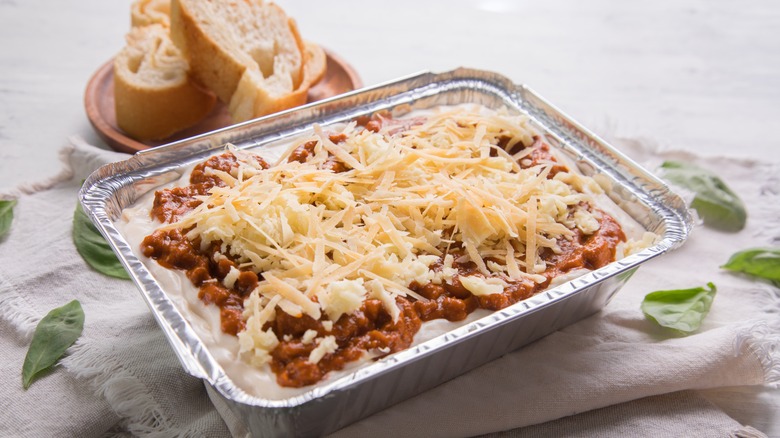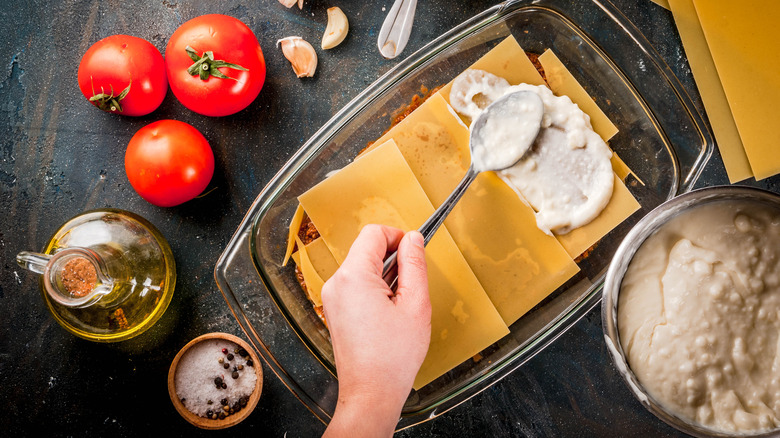The Secret To A Truly Great Casserole Is Making It The Day Before Baking
When you're looking to make a convenient, tasty, and filling meal, casserole is always a great choice. However, your process is the key to a streamlined experience and top-tier flavor when making your favorite casserole recipe. To this end, prepping the ingredients and assembling the casserole about one or two days before you bake it offers home chefs two unbeatable benefits.
Putting a casserole together a day or so before baking ensures that everything is ready to go when dinner time rolls around. That means no rushing at the last minute. Along with greater convenience, making a casserole ahead of time also results in a richer, deeper taste. The extra time spent in the refrigerator allows separate ingredients to be fully incorporated, which is especially beneficial for casseroles containing meat. The meaty juices will fuse with ingredients like starch, cheese, and vegetables over time, which can exponentially ramp up the flavor of the finished dish.
You can also freeze casseroles for efficient meal planning
While pre-made casseroles can remain fresh for about two days in the refrigerator, you can freeze these dishes for a longer period. In this case, you may be able to store the casserole for up to six months in the freezer without greatly impacting the quality of the dish. Keep in mind that casseroles containing raw meats should always be fully cooked before freezing.
With something like freezer-friendly macaroni and cheese, you can assemble the ingredients and place them in the freezer without the need for baking first. You just need to make sure the casserole is well protected from the chilly temperatures, as freezer burn will diminish both the taste and texture. Start by placing aluminum foil inside the baking dish before adding ingredients, making sure there's enough foil to cover the top of the mac and cheese as well. After letting the dish rest in the freezer overnight, remove the aluminum foil-wrapped casserole from the dish and secure it with an extra layer of foil before putting it back in the freezer.
Other tips for an unforgettable casserole
Like most recipes, the ingredients used in casseroles will be elevated by incorporating the right seasonings. When adding herbs and spices to casseroles, the adage less is more definitely does not apply. Instead, use more seasoning than you normally would to ensure a flavorful result. Liberal seasoning is especially crucial when using ingredients that lack bold flavors, such as chicken and certain vegetables. Speaking of veggies, fresh is best with casseroles, as frozen varieties may create a soggy texture due to the water content.
Although it might not seem like a major issue, careful selection of cookware is also important. Always follow the dish size and shape recommendations listed in your recipe, as these factors can impact cooking time. If you use a different size or shape than what's indicated, it could lead to burned or undercooked ingredients. Also, be mindful of how full the dish is when building your casserole. The general rule is to aim for the baking dish to be ¾ full, as this bit of space can help prevent spillovers. With a careful approach, you can whip up casseroles that are as convenient as they are tasty.


